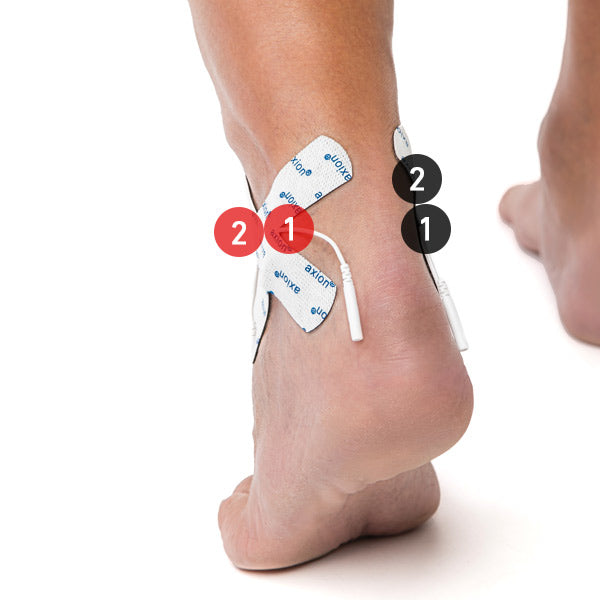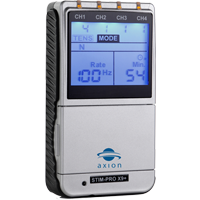TENS application for ankle pain

A TENS device can provide quick relief for ankle pain. Even in everyday life, ankle injuries sometimes occur, often due to twisting of the ankle. Because the ankle consists of the shin, fibula, and ankle bone, the pain radiates from the foot into the leg. Ligament injuries, bruising, swelling, sprains or strains occur, which quickly improve with TENS treatment. TENS can also relieve pain in chronic ankle pain [1].
A TENS device transmits electrical impulses to the skin via electrodes, which leads to the release of endogenous, pain-relieving endorphins[2] and blocks the transmission of pain to the brain. In addition, the TENS treatment promotes blood circulation[3].

-

This guide is for orientation purposes and does not replace the supervision of a doctor or therapist. Please follow the warnings and safety instructions of your device. Changes and errors are possible.
-

Number inside the circle: Channel number
Circle color: Red = Electrode 1, Black = Electrode 2
The recommended programs for axion TENS devices
*The STIM-PRO Eco is a manual TENS device. If you have not received parameter settings from your therapist, please use a frequency range between 70 and 120 Hz (burst mode 2 Hz) and a pulse width range between 150 µs and 200 µs.
Please note when using TENS:
The intensity should be adjusted so that it is felt as a pleasant tingling sensation. The duration of the application should be approx. 40 minutes in order to be able to achieve a lasting reduction in pain. It also makes sense to switch programs every now and then.
The advantages of pain treatment with TENS
-

From everywhere
You can use TENS therapy anywhere. It doesn't matter whether you're sitting comfortably on the sofa or in the office.
-

Drug free
TENS pain therapy is an alternative to drug pain treatment
-

At any time
You can use TENS flexibly and at any time. Success can already be achieved after the first treatment
-

Free of side effects
When used correctly, pain treatment with TENS has practically no side effects
Studies and scientific sources








